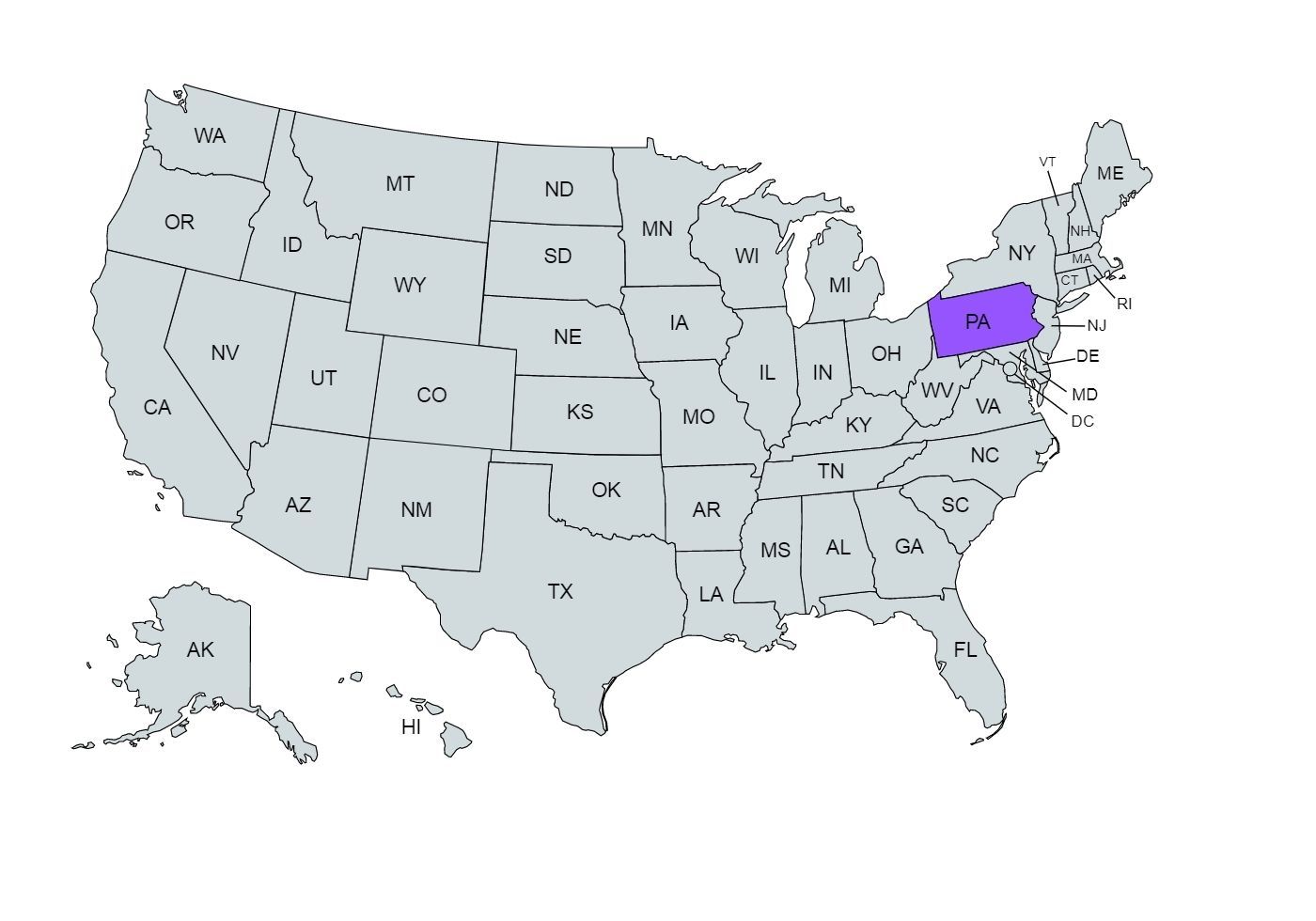Pennsylvania Paycheck Calculator: Calculate Your Take Home Pay
If you’re wondering, “How do I figure out how much money I take home in Pennsylvania” we’ve got you covered.
Use our simple paycheck calculator to estimate your net or “take home” pay after taxes, as an hourly or salaried employee in Pennsylvania.
Pennsylvania Paycheck Calculator
Meanwhile, get ahead with our free resources:
How Does the Pennsylvania Paycheck Calculator Work?
Input your salary information, such as wage and pay frequency, and our tool will handle the tax calculations for you. Once you’ve filled in all the information, click the “Calculate Tax” button, and the calculator will provide an estimate of your net or “take home” pay for the specified pay period. You can also check out our tools to break down salary to hourly and hourly salary calculator.
Overview of Pennsylvania Taxes
As of 2021, Pennsylvania's gross state product (GSP) ranks 6th among all U.S. states at $839.4 billion, making it the 22nd-largest economy in the world if it were an independent country.
The state hosts a total of 50 Fortune 500 companies, and various industries, including finance, insurance, chocolate manufacturing, locomotive production, and logistics, contribute to its economic landscape.

If you decide to start a new job in the "Keystone State", here's what to expect tax-wise.
Pennsylvania has a flat state income tax rate of 3.07%, which is the lowest among states employing flat rates.
That being said, Pennsylvania also features numerous cities collecting local income taxes with varying rates, such as 3.8% in Philadelphia, 3.6% in Reading, and 3.4% in Scranton.
Your FICA taxes will consist of 6.2% for Social Security and 1.45% for Medicare, with employers matching these amounts.
If you are a self-employed individual in Pennsylvania, you must pay the full FICA taxes by yourself but you can benefit from tax deductions.
Pennsylvania's tax situation is moderately favorable, featuring a low flat state income tax rate, but it becomes more complex due to the presence of local income taxes in many areas.
Median Household Income in Pennsylvania
Salary in each state is typically based on the cost of living. While salaries vary widely based on position, the median household income in your state can give you a glimpse at the average salary a household is earning in your region.
| Year | Median Household Income |
|---|---|
| 2011 | $50,228 |
| 2012 | $51,230 |
| 2013 | $52,007 |
| 2014 | $53,234 |
| 2015 | $55,702 |
| 2016 | $56,907 |
| 2017 | $59,195 |
| 2018 | $60,905 |
| 2019 | $63,463 |
| 2020 | $63,627 |
| 2021 | $68,957 |
| 2022 | $71,789 |
| 2023 | $73,826 |
In 2023, the median household income in Pennsylvania reached its highest point at $73,826, marking a steady increase from the previous year, which had a median income of $71,789.
Examining the preceding years, a general upward trajectory is observed, with median incomes gradually rising over time.
Notably, from 2011 to 2023, there is a consistent pattern of growth, indicating an overall improvement in the economic well-being of Pennsylvania households.
As you can see by the information above, the data illustrates a positive trend in median household income in Pennsylvania over the past decade, with a steady increase in 2023.
These figures can be indicative of economic fluctuations and external factors affecting residents' financial situations, emphasizing the importance of monitoring and addressing economic changes to support households.
Tips for Maximizing Your Take Home Pay in Pennsylvania
Here are some tips to help you maximize your paycheck:
- Become familiar with your payroll deductions
- Understand techniques for reducing your tax
- Fully utilize your work-related perks
- Develop a financial plan and define financial goal
- Look into additional income through extra hours or performance incentives
- Regularly check your pay stubs for inaccuracies
